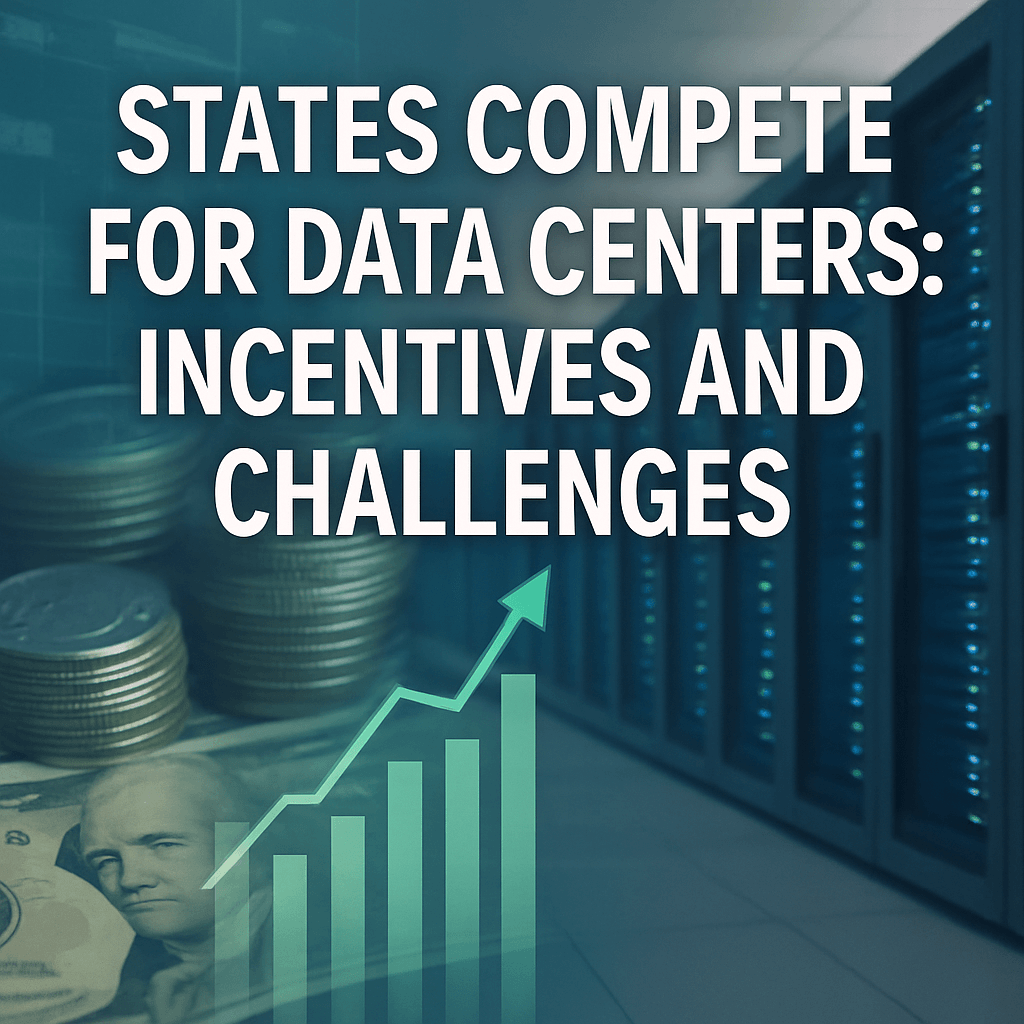States Compete for Data Centers: Incentives and Challenges

The explosive growth of data centers, essential for supporting America’s rapidly increasing demand for artificial intelligence (AI) and cloud computing, has prompted states to offer significant incentives to attract these facilities in hopes of fostering local economic growth. However, this rush for data centers has also led to various challenges, including pushback from local lawmakers and communities concerned about resource allocation and environmental impacts.
The Surge in Data Center Demand
The late 2022 launch of OpenAI’s ChatGPT has triggered an unprecedented boom in data center construction. As AI and cloud computing platforms become integral to modern business operations, the requirement for vast computational resources has skyrocketed, prompting states to expedite efforts to secure these economic opportunities. This has resulted in an uptick in state legislative activity focused on incentives for data centers.
Incentives Across the Nation
Various states are now offering financial incentives amounting to tens of millions of dollars as part of a strategic effort to attract data centers. Some of the incentives include:
- Tax exemptions on construction materials and equipment, crucial for reducing initial capital expenses.
- Streamlined permitting processes to allow for faster project completion.
- Special designations for areas as data center zones with reduced regulatory oversight.
For example, Kansas has recently approved a new sales tax exemption specifically for goods related to the development of data centers. Kentucky and Arkansas have expanded pre-existing exemptions to encompass newer projects. Michigan has introduced stipulations that require data centers to utilize municipal water and clean energy sources, thus ensuring sustainability practices are followed.
Arguments for and Against Data Centers
The debate surrounding the proliferation of data centers often presents two contrasting narratives. Critics contend that despite the heavy investment and operational costs associated with data centers, their employment levels are relatively low, providing minimal long-term economic benefits aside from construction jobs. In contrast, proponents highlight that the construction phase of data centers generates substantial temporary employment and injects considerable funds into local economies through the purchase of goods and services, as well as tax revenue generation for local governments.
As an example, Rep. Eric Nelson from Pennsylvania emphasizes the state’s potential to attract data center investments, citing its robust labor force and abundant natural resources. However, he articulates frustration with bureaucratic obstacles that delay progress.
Zoning and Power Supply Issues
The extensive land, energy, and water requirements of data centers have sparked significant discontent in several states. Lawmakers in West Virginia have enacted legislation that forms “microgrid” districts devoid of local zoning and utility rate regulations, allowing data centers to source power directly from standalone plants. Governor Patrick Morrisey has deemed this effort a “landmark policy proposal” aimed at positioning West Virginia favorably in the data center development landscape.
States like Utah and Oklahoma are also passing legislation that facilitates data center developers in procuring power supplies autonomously, sidestepping traditional grid channels. Meanwhile, in South Carolina, recent legislation enables faster construction of power plants to meet escalating demand from data centers, including a large Facebook facility. Nonetheless, some lawmakers express concerns over resource use, citing issues of water consumption and the potential increase in costs for average ratepayers.
Local Legislative Pushback
In areas experiencing a data center boom, there is notable legislative pushback. For instance, in Oregon, lawmakers are advancing regulations requiring data centers to assume financial responsibility for the expense brought about by power plants and infrastructure changes necessitated by their expansion. Georgia is considering similar measures. In Virginia, where data centers are heavily concentrated, Governor Glenn Youngkin vetoed a bill demanding further disclosures on issues related to noise pollution and water utilization, reflecting the tension between development interests and community concerns.
Moreover, in Texas, following the statewide blackout of 2021, lawmakers face the challenge of balancing the interests of data center expansion with the protection of the electric grid. A proposition aimed at enhancing power supply connections between data centers and power plants is under scrutiny, as it includes provisions that would allow utility authorities to mandate a shift to backup power solutions under emergency circumstances. Industry stakeholders, such as Walt Baum from Powering Texans, warn that such regulations could deter data center investments in Texas.
Conclusion: Navigating Future Challenges
The battle for data center investments among states is intensifying, as both public and private entities recognize the critical role these facilities play in the digital economy. However, as states navigate the intricate balance of fostering economic development while addressing community concerns over resource allocation, the path forward is fraught with challenges. The viability and sustainability of data centers will depend not only on state policies but also on technological advancements in energy efficiency and water usage.
Looking Ahead
As the demand for data centers continues to rise, collaboration between state lawmakers, energy providers, and data center developers will be essential in building a framework that supports growth while safeguarding local resources. The future development of these facilities will likely hinge on effective dialogue and innovative solutions to ensure that communities can thrive alongside their digital counterparts.
Source: fortune